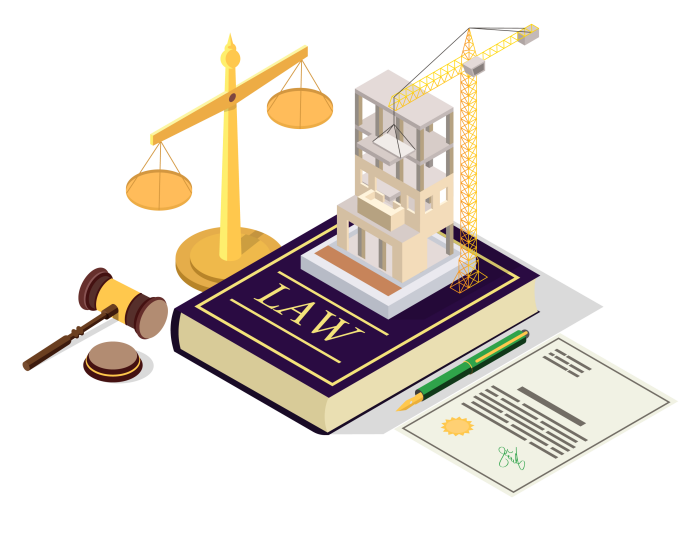Key Takeaways
- Many tower blocks remain unsafe in 2023
- Leaseholders have shouldered much of the burden
- The government have pledged billions into remediation
- Large developers are expected to commit to remedying buildings with which they are associated
- Leaseholder protections shield qualifying leaseholders from cladding costs. There was an issue where leaseholder protections were not being transferred in a lease extension by the existing owner, but this has now been rectified with the enaction of the Levelling-up and Regeneration Act 2023. Leaseholder protections are transferred to the new lease or owner in sale and extension.
- New hope for leaseholders with new mortgage products now available
The issue of dangerous cladding fitted to many tower blocks throughout the UK has come to prominence since the awful fire at Grenfell Tower. The tragedy has had many knock-on effects; one of the major ones being the position of leaseholders who currently live in tower blocks which have unsafe cladding.
As things stand, their flats have suddenly become unsaleable, and many leaseholders have been unable to remortgage. Additionally, because the value of such flats has fallen, occupants are caught in negative equity. If you are such a leaseholder, what can you do to find out what your position is and what should you then do to make the best of it?
Have you been asked to pay for the remediation of a safety defect?
- Leaseholders protections ensures that you are not liable to pay.
- If you qualify, you will be protected from the financial burden of remediation costs concerning building safety.
- If you're trying to sell, you will need a Deed of Certificate to prove that the leasehold is subject to leaseholder protections.
- Is the freeholder still forcing you to pay for these costs? We can help solve this property challenge.
The Grenfell Tower Disaster
In the early hours of 14 June 2017, Grenfell Tower in North Kensington, West London, suffered a huge fire, which resulted in the deaths of around 100 people. Many more people became homeless as a result.
The fire was most likely caused by a refrigerator catching fire. It rapidly spread when the fire reached the cladding on the outsides of the building. This cladding was found to be a huge fire hazard.
Authorities admitted that the unsafe cladding had been fitted in more than 300 properties throughout the UK, including in around 160 social housing tower blocks, and one of the initial scandals after the event was the snail's pace at which work to take down and replace the cladding was carried out. 5 years later, new estimates range from
481 to
9,793 buildings, still clad in dangerous materials that need to be removed, putting lives at risk.
The legal arguments over who should take ultimate responsibility for allowing the cladding to be fitted continue to be hotly contested.
Can you help?
There are several charities who continue to support the survivors and bereaved families, as well as funding initiatives to raise awareness and prevent a similar tragedy from happening again.
Grenfell United
The Grenfell Foundation
The Grenfell Tower Memorial Commission
This article looks at the issue of dangerous cladding on flats in tower blocks and considers the following:
Negative equity means that your property is worth less than the mortgage you owe, because its value has fallen since you bought & mortgaged it. Many leaseholders of flats effected by the cladding crisis have found themselves in negative equity, as their property values have plummeted due to the risk and remedial costs involved.
Negative equity can prevent you from
selling, as the sale won't cover your outstanding mortgage and you will still owe your lender the difference. This is even more devastating in a
repossession. If you can stay put, you do not need to panic, as long as you can keep paying the monthly mortgage repayments. You may also wish to protect yourself by taking out
income protection insurance.
Remortgaging involves a
valuation of your property. This might be a desktop valuation (remote) whereas it more commonly involves an actual physical visit by a valuer. This valuation is the lead factor in any lenders decision as to whether they will grant a mortgage and how much they will lend.
Good News
In December 2022, the Royal Institute of Chartered Surveyors (RICS) Standards and Regulation Board (SRB) issued
new guidance to valuers regarding cladding, 'to support lending and boost confidence for home buyers and sellers in the public interest'.
Six major lenders are now offering mortgages on qualifying properties affected by the dangerous cladding crisis. You must be able to provide evidence that any of the following apply:
2You're covered by one of the recognised Government schemes – the Developer Remediation Contracts, the Medium Rise Scheme or the Building Safety Fund;
Or
If none of these apply to your property, you will likely still face challenges to getting a mortgage.
The evidence required varies from lender to lender and you may still require an
EWS1. The lenders who are now offering mortgages according to the new guidance are:
- Barclays
- HSBC
- Lloyds
- Nationwide
- NatWest
- Santander
They have each committed to offering the same interest rates on these products as they do to other borrowers, so you won't pay more, directly. However, with fewer options of lender and mortgage product, you may miss cheaper deals elsewhere.
Free Consultation* | 100% Impartial Advice | Access to Whole Market
The help to buy (HTB) equity loan equates to up to 20% (40% in London) of the property's value, which is subject to increasing interest from 5 years after the purchase. The scheme took a gamble on house prices rising over time and promised any loss would be shared; at the point of
repayment, the homeowner would owe/pay at 20% of the
current market value. However, Homes England (who run the scheme on behalf of the Government), retrospectively and repeatedly changed the rules.
Where other leaseholders have been able to 'cut their losses' by selling at a reduced rate to cash buyers, HTB leaseholders cannot. Forced by Homes England to sell only at 'unaffected market value', they have been unable to sell, unable to sublet and are now paying increasingly high interest on the equity loan (payable after 5 years) - which hasn't actually shrunk relative to the decrease in the properties value, after all. They have been trapped and unable to move.
Once again, this is entirely down to your lender, as per Section 1 and Section 2 above; they may or may not wish to lend, according to the valuation. There is nothing to stop you
staircasing if you can fund your staircasing with cash, however.
If you are able to staircase, you should be able to buy your new share at a decreased price, reflecting any fall in value of your flat due to the cladding.
If you are a council tenant, your
Right to Buy should remain of itself unaffected, and it would cost less to buy your flat than previously, however your challenge, as discussed above, is finding a lender.

Building Control Regulations and Fire Safety Regulations require freeholders to take down all unsafe cladding from tower blocks, although it will be some time before all the UK's buildings affected by the issue will have done so.
The issue of who'll ultimately have to pay for the installation of the sub-standard cladding is still the subject of ongoing and fiercely contended legal battles.
Freeholders have largely passed on the costs of taking down all the dangerous cladding (and possibly replacing it with safe cladding) to the leaseholders and legal cases have observed this principle. That means that leaseholders in blocks where dangerous cladding is removed and replaced are likely to have to pay for the work under
Section 20 major works, usually via the reserve or sinking fund.
Knowledge of this is also likely to be a retardant for a buyer when it comes to finding one to purchase your flat.
The government has pledged billions toward remediation.
At press time, responsibility for the installation of dangerous cladding is the subject of a number of heated legal battles and therefore things may change in the medium or longer term.
The Grenfell Tower disaster was an unprecedented tragedy, the reverberations of which are likely to be around for many years to come.
If you live in a flat in an affected tower block, you should consider doing the following:
- Find out what you can about what your property's current value is. You can use a variety of online sources to help you with this. This should give you an idea whether you are in negative equity and by how much.
- If you have an outstanding mortgage, you should contact your lender and establish what their position is regarding remortgaging your property.
- If your current lender states that they would not grant you a remortgage using your property as security, you should see if there are any other lenders who will. We would always advise that you consult an independent mortgage broker to help.
- Be prepared for larger service charges - you and your other leaseholders may have to pay for replacing the suspect cladding and any other related costs such as providing a waking watch.
- Keep observing legal developments related to this matter; the future is presently unclear and it's possible that you might be able to claim back the increased service charge costs related to dangerous cladding in future.
Negative effects on your property value and mortgage lenders' willingness to lend against it will limit your options when you come to sell. Read more in
Selling a Flat With Cladding.











